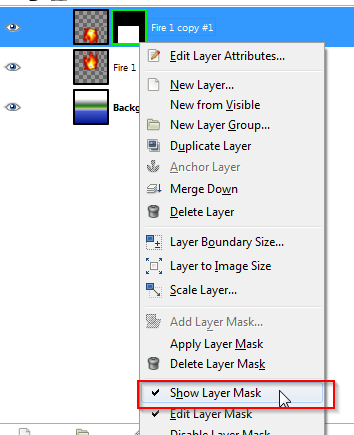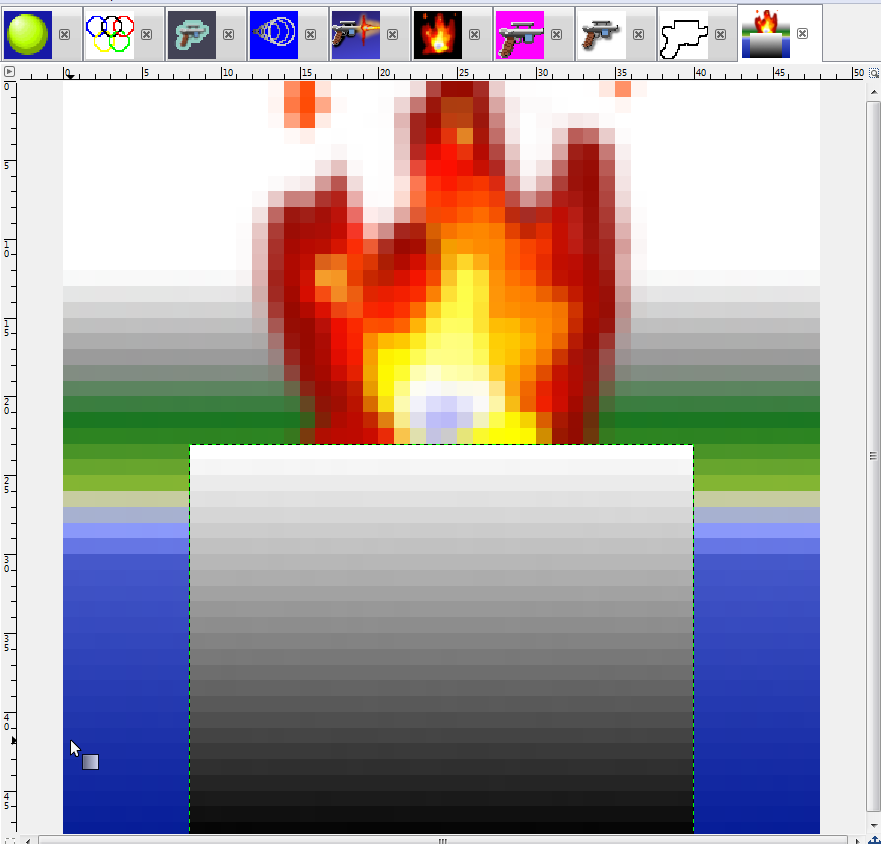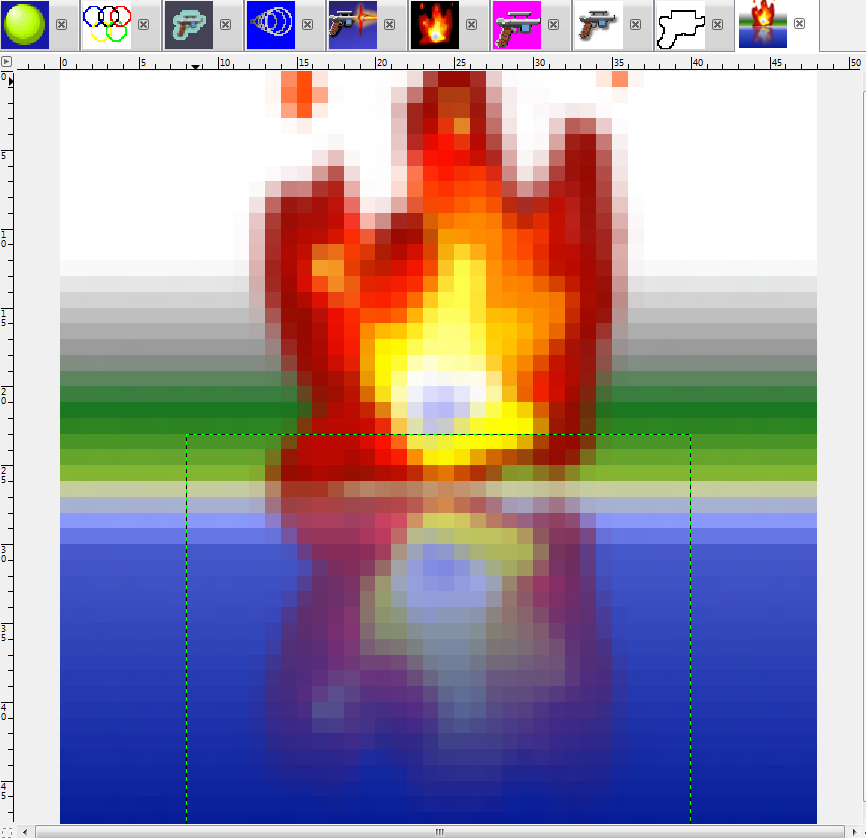Hi!
Here comes another suggestion for improvement from the wannabe Gimp user. 
It is regarding the Layer Masking that was used at the end of the “Drop Shadows and Reflections” lecture.
Instead of applying a gradient layer on top of the reflection layer, try using Gimp’s “Layer Mask” functionality.
Here is how:
-
Add a layer mask by right-clicking the layer and selecting “Add Layer Mask…”
-
In the dialog that appears, choose “White (full opacity)”.

The layer mask works like this: Parts that are white in the mask are fully opaque. Parts that are black are fully transparent, and any gray color in between will give the respective opacity level.
-
In order to see the actual mask, right-click the layer and “Show Layer Mask”.

-
Edit the mask using black-and white gradient. In our case, we want the top part to be opaque, and the bottom part to be transparent. Therefore, a gradient that is white on top and black at the bottom will do the trick.
-
Unselect the “Show Layer Mask” in the Layer Right-click menu again, and Voilà! The reflection layer is now semi-transparent, being opaque on top, and transparent at the bottom!

Maybe are already covering this in an upcoming lecture, but since I have only got this far, I do not know yet… 
Best regards
Carl


